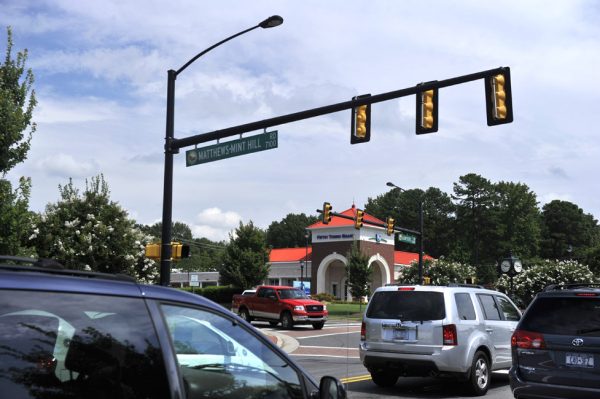Easy access to work? Charlotte’s not atop list

Charlotte ranks near the bottom in a recent study of access to jobs via automobiles in the top 51 U.S. metro areas. Raleigh ranks even lower.
The study, Access Across America, by David Levinson, the R.P. Braun/CTS Chair in Transportation Engineering at the University of Minnesota, ranks the Charlotte metro area No. 40, with the Raleigh area next to last, at 50. The study also examines metros that have seen the greatest change since 1990, with new measurements taken in 2000 and 2010 for comparison.
Levinson’s study is not simply yet another traffic congestion ranking. It focuses on accessibility: a measure that examines both land use and the transportation system. How easily can specific destinations be reached? The study is the first of its kind to evaluate trends in the time spent to reach jobs during morning peak hours across America’s largest metropolitan areas. Understanding a region’s accessibility is important, as accessibility is associated with commute times, property values and economic productivity, other studies by Levinson have found.
|
Related articles For more about jobs and commuting in Charlotte, see: |
Within the study, rankings are generated using a weighted average of accessibility. Jobs reachable within 10 minutes are weighted most heavily, and jobs are given decreasing weight as travel time increases up to 60 minutes. Based on this measure, the 10 metro areas with the greatest average accessibility to jobs are (in order): Los Angeles, San Francisco, New York, Chicago, Minneapolis, San Jose, Washington, Boston, Dallas, and Houston.
Transportation systems are a universally recognized accessibility factor, but density is not, according to Bill McCoy, retired director of the UNC Charlotte Urban Institute and professor emeritus of political science. Those two factors taken together should inform policy-makers seeking to enhance accessibility. “In fact, the way many of those cities with low accessibility scores have developed are with job sites scattered throughout a region, often in relatively small clusters and subdivisions located without any consideration of their relationship to where jobs are located,” says McCoy.
The Charlotte metropolitan area’s rankings vary from No. 30 to No. 47, depending on the time-frame:
- In 10 minutes, 73,878 jobs can be reached, rank: 47.
- In 20 minutes, 335,340 jobs can be reached, rank: 44.
- In 30, 40, 50, or 60 minutes, 727,384 jobs can be reached, rank: 34.
The numbers show that nearly twice as many jobs take 30 minutes or longer to reach than those with less than 30-minute commutes. “There are two broad avenues to increasing accessibility: improving transportation by making it faster and more direct is one way,” the report says. “Increasing the density of activities, so that, for instance, more jobs are located closer together, and closer to workers,” is the second. “Neither of these things can be easily shifted overnight, but over the longer term, they do change.”
“In some ways, the findings from this study are counterintuitive,” added McCoy. “Many of the cities at the top of the accessibility scale are known to have some of the worst congestion in the United States. But the study links higher accessibility scores to higher densities of jobs with higher densities of people living close to those jobs.”
Key findings of the report:
- In 2010, the average American living in the top 51 metro areas could reach slightly fewer jobs by automobile than in 1990, but more jobs than in 2000.
- Automobile speeds were faster in 2010 than in 2000 (and about where they were in 1990).
- Overall job losses in the 51 areas have limited accessibility gains associated with faster networks.
- The average U.S. city is slightly more circuitous in 2010 than in 1990 because roads in newer areas (suburban growth) are not as well connected as those in older areas of the region.
- The rankings have significantly changed since 1990, when New York, Philadelphia, Chicago, Miami, Los Angeles, Boston, Cleveland, Detroit, Washington and Dallas made up the top 10.
People living in many smaller metro areas can reach as many jobs by car as people living in much larger areas within both the 10- and 20-minute time frames. For instance New Orleans, Salt Lake City and Jacksonville are among the top 10 for number of jobs that can be reached within 10 minutes. Jacksonville, Milwaukee and Las Vegas are among the top 10 for number of jobs that can be reached within 20 minutes.
Charlotteans are familiar with long commutes and traffic jams. “The study comparisons indicate that Charlotte and Raleigh have significant work to do on the accessibility factor, with summary scores both near the bottom of the 51 metro areas,” says McCoy.